#anime history
Text
I Hate How She Talks About Snow White

"People are making these jokes about ours being the PC Snow White, where it's like, yeah, it is − because it needed that. It's an 85-year-old cartoon, and our version is a refreshing story about a young woman who has a function beyond 'Someday My Prince Will Come. "
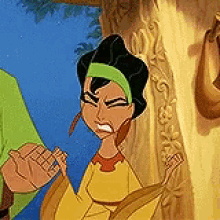
Let me tell you a little something's about that "85-year-old cartoon," miss Zegler.
It was the first-ever cel-animated feature-length full-color film. Ever. Ever. EVER. I'm worried that you're not hearing me. This movie was Disney inventing the modern animated film. Spirited Away, Into the Spider-Verse, Tangled, you don't get to have any of these without Snow White and the Seven Dwarfs (1937.)
Speaking of what you wouldn't get without this movie, it includes anime as a genre. Not just in technique (because again, nobody animated more than shorts before this movie) but in style and story. Anime, as it is now, wouldn't exist without Osamu Tezuka, "The God of Manga," who wouldn't have pioneered anime storytelling in the 1940s without having watched and learned from Snow White and the Seven Dwarfs in the 1930s. No "weeb" culture, no Princess Mononoke, no DragonBall Z, no My Hero Academia, no Demonslayer, and no Naruto without this "85-year-old cartoon."
It was praised, not just for its technical marvels, not just for its synchronized craft of sound and action, but primarily and enduringly because people felt like the characters were real. They felt more like they were watching something true to life than they did watching silent, live-action films with real actors and actresses. They couldn't believe that an animated character could make kids wet their pants as she flees, frightened, through the forest, or grown adults cry with grieving Dwarves. Consistently.
Walt Disney Studios was built on this movie. No no; you're not understanding me. Literally, the studio in Burbank, out of which has come legends of this craft of animated filmmaking, was literally built on the incredible, odds-defying, record-breaking profits of just Snow White and the Seven Dwarfs, specifically.
Speaking of record-breaking profits, this movie is the highest-grossing animated film in history. Still. TO THIS DAY. And it was made during the Great Depression.
In fact, it made four times as much money than any other film, in any other genre, released during that time period. It was actually THE highest-grossing film of all time, in any genre, until nothing less than Gone With the Wind, herself, came along to take the throne.
It was the first-ever animated movie to be selected for the National Film Registry. Actually, it was one of the first movies, period, to ever go into the registry at all. You know what else is in the NFR? The original West Side Story, the remake of which is responsible for Rachel Ziegler's widespread fame.
Walt Disney sacrificed for this movie to be invented. Literally, he took out a mortgage on his house and screened the movie to banks for loans to finish paying for it, because everyone from the media to his own wife and brother told him he was crazy to make this movie. And you want to tell me it's just an 85-year-old cartoon that needs the most meaningless of updates, with your tender 8 years in the business?
Speaking of sacrifice, this movie employed over 750 people, and they worked immeasurable hours of overtime, and invented--literally invented--so many new techniques that are still used in filmmaking today, that Walt Disney, in a move that NO OTHER STUDIO IN HOLLYWOOD was doing in the 30's, put this in the opening credits: "My sincere appreciation to the members of my staff whose loyalty and creative endeavor made possible this production." Not the end credits, like movies love to do today as a virtue-signal. The opening credits.
It's legacy endures. Your little "85-year-old cartoon" sold more than 1 million DVD copies upon re-release. Just on its first day. The Beatles quoted Snow White in one of their songs. Legacy directors call it "the greatest film ever made." Everything from Rolling Stones to the American Film Institute call this move one of the most influential masterpieces of our culture.
This movie doesn't need anything from anybody. This movie is a cultural juggernaut for America. It's a staple in the art of filmmaking--and art, in general. It is the foundation of the Walt Disney Company, of modern children's media in the West, and of modern adaptations of classical fairy tales in the West.
When you think only in the base, low, mean terms of "race" and "progressivism" you start taking things that are actually worlds-away from being in your league to judge, and you relegate them to silly ignorant phrases like "85-year-old cartoon" to explain why what you're doing is somehow better.
Sit down and be humble. Who the heck are you?
#Snow White#Snow White and the seven dwarfs#snow#snow white 1937#snow white and the seven dwarfs 1937#Snow White 2024#Rachel zegler#west side story#poc#Disney#live action Disney hate#animation history#Do not go see this movie. Do not stream this movie.#Anime#anime history
5K notes
·
View notes
Photo

SPY FAMILY “ YOR “
BY TECHNODROME1
#yor#spyfamily#spy family#anime#new#manga#anya#loid#colors#trippy anime#well done#amazing#excellent#modern art#anime history#japan culture#art style#work#technodrome1
4K notes
·
View notes
Text

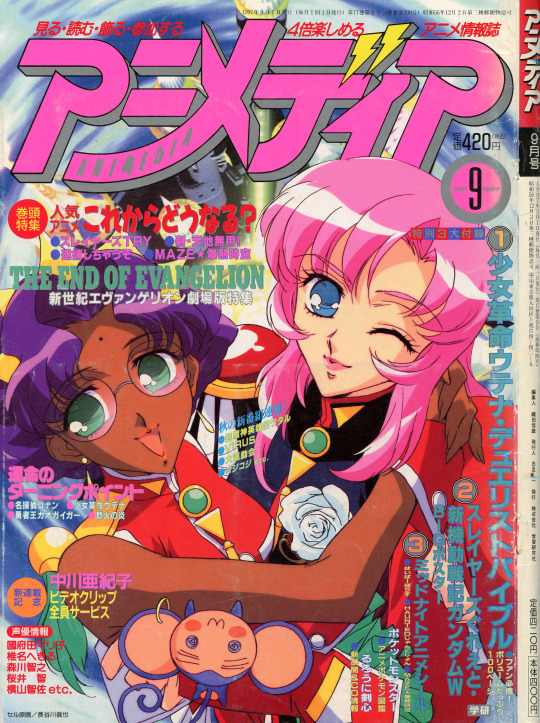
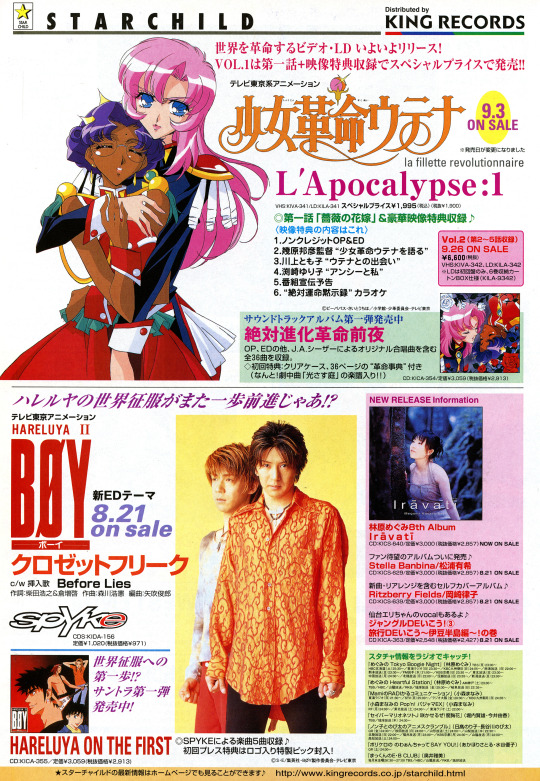
Animedia Magazine, September 1997!
A Revolutionary Girl Utena spread led me to grab this used, and because I archive like a maniac, I also scanned the insert sub-magazine that sits at the centerfold: Animedia's 'Anime Eye: By Reader for Reader.' Check those out below!
Can I read any of it? Nope! But it's chock-full of vintage 1997 Revolutionary Girl Utena fanart that dropped as the show came out. A really neat artifact! I also scanned the advert image above of the first release of the series on home media.
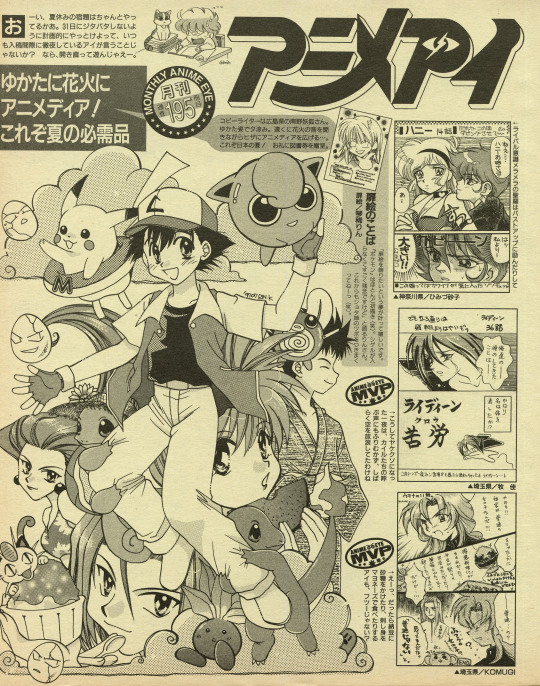
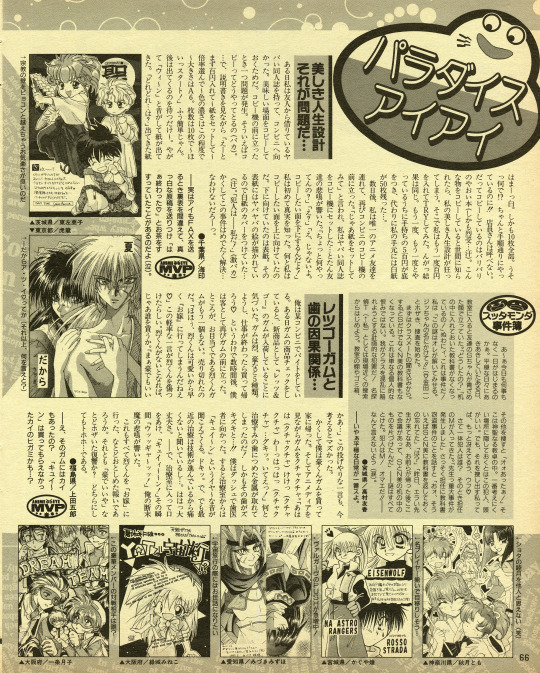










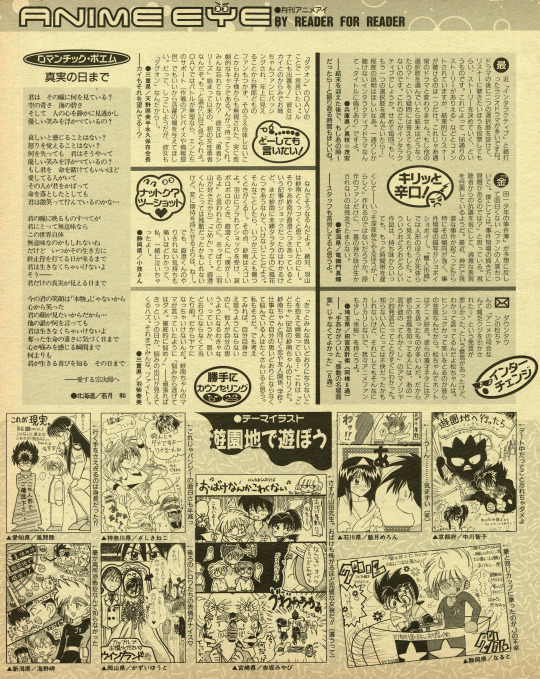

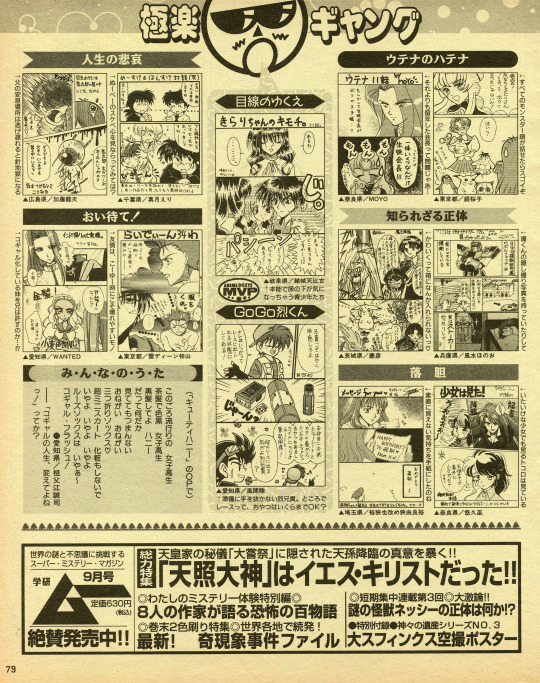


#revolutionary girl utena#rgu#sku#shoujo kakumei utena#utena#animedia#animedia magazine#anime archive#anime history
623 notes
·
View notes
Text
The 5000 Fans of Dr. T (Zines, 1981-1982)
You can read this anime zine here.
The cover artist of issues 0 and 10, furry fandom founding member Mark "Sy" Merlino, passed away recently.
If you're wondering what Osamu Tezuka would have thought of furries, the answer is: possibly whatever he thought of himself.

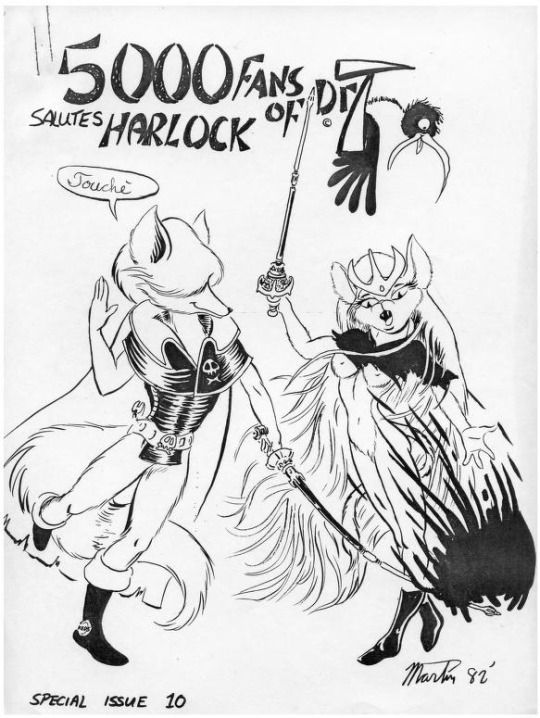
#internet archive#zine#zines#anime#anime zine#anime history#fandom history#furry#furries#furry history#furry fandom#furry fandom history#sy sable#osamu tezuka#captain harlock#1981#1982#1980s#80s
43 notes
·
View notes
Text





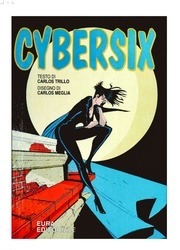

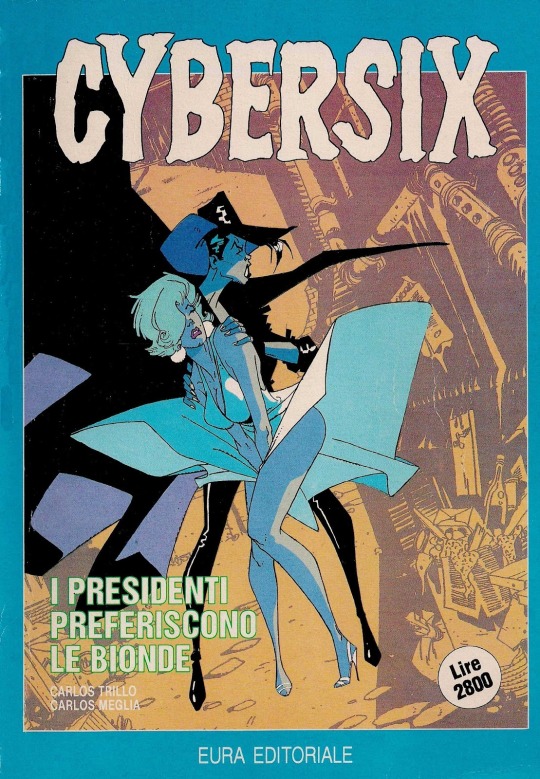
Cybersix is a 1991 Argentinian comic book series and 1999 animated series, produced in Canada but animated in Japan by TMS.
It's interesting to the visual similarities with Cybersix and other TMS productions such as Lupin the Third (the animation found in Farewell to Nostradamus, especially), Detective Conan, as well as with other TMS collaboration projects such as Batman the Animated Series, Gargoyles, Ducktales, Animaniacs and more.
It makes me wonder if not only the same overall animation companies worked on all these series, but possibly many of the same creative teams and specific artists. would be interesting to look into!
319 notes
·
View notes
Text
Ah the Red light- I mean “entertainment” district 💄

It is true that there are three figures that we associate with Japan: Naruto, Luffy and Goku - I mean the ancient samurai, the modern salary man, and the eternal Geisha. Especially during the Edo Period, there was a rise in the so-called red-light districts, stage of the mesmerizing ukiyo-e, that the common mortal would happily purchase, in special, the shunga, that could picture the most obscene acts. But things aren’t always like the art portrait am I right?
Sex trade in early modern Japan was so important that its history can also be read as the history of the society. But even though the prostitution relationship with the government changed, one thing they always had in common: it was the exchange of sexual services for a payment [most of the times in cash].
Before all, let's say something: male prostitution did exist. But it was just not considered the same business than the woman’s prostitution. Male sex trade became more associated with the theatre world and the teahouses. It was never recognised or regulated and had never the same punishments that woman did. This could be linked to the function of the man and woman in the households. Since a man could only be a brother, but the woman could start turmoil and try to substitute the wife in the family and give the male heirs. (Ah yes, always the baby problem. So be gay do crime I guess)
During the 17th century prostitution was flued by the demographic movements of man opening cities, by the 18th the power shifted to the small provinces. And to where the man goes, the sex trade goes. In the 19th century the sex trade spread to all the territory.
In the beginning of the Edo period, the rule of the "wife" and the "prostitute" could be confused. After all the women could be said to only have those two paths, and it wasn't for her to choose, but her male guardian. Since the woman was viewed as an object of the man's property, he could sell her as he wished. Yes, even wives and daughters from "good" families were sold as a way to pay a debt. “There was no question that the Tokugawa authorities’ vision of status order had been confining for woman: it subordinated them to male household heads and emphasized the values of obedience and submission. Indeed, some must have welcomed the opportunity to step outside their narrowly defines roles as wives and daughters. (…) But for the vast majority of woman who worked in the sex trade, the crises of the gendered order, and the disintegration of the limited protection it offered, was hardly a form of liberation.” - Stanley,2012;

In 1612 a man called Jin'emon tried to ask the Shogunate to recognise his business. He said that unregulated sex trade could cause a lot of problems like young girls being kidnapped, samurais plotting rebellions in the courtesans' beds, man splurging their wages on woman (and babies a lot of unwanted babies coming back for their illegitimate families let’s not forget that). The shogunate (finally) agreed and gave him a plot of land in the outskirts of town with (a lot of) conditions: they would regulate the sex trade, they would record the comings and goings, report anything suspicious, and the woman - yujo - could not leave the "pleasure quarters" and thus the Red Light district was born, at the time called Yoshiwara or "Reed Plain".
The Shogunate soon started to forbid the selling and buying of humans, believe it or not this also included woman. But, as always, with exceptions. Woman could enter the “pleasure quarters” if the hitonushi [the woman’s legal guardian] allowed and if she consented. The same would apply if a family was in extreme poverty, the man could only sell is wife as a last resort. Also, eternal servitude was now illegal, the limit was now 10 years, but obviously the Yoshiwara’s pleasure houses lords would manipulate the contracts to go around this rule.
The Shogunate tried to regulate the clandestine prostitutes that the common people called baita [whores]. But these women, that normally worked in the side of the streets, were paid very little and were the wives and daughter of marginal men. There was also the problem of the “bathhouses”, where pretty woman would scrub the backs and rinse their hair of men. Yoshiwara brothels complained that these bathhouses were hurting their business since it was at the time that bordels were forbidden from working during the night, so this bathhouses would do drinking parties with shamisen music and everything. And the yuna [bathing girls] were cheaper than the yujo. Bit after the big fire of Meireki at 1657 these bathhouses choose to relocate to Yoshiwara.
But there was a problem is this tentative of politicised the sex trade: the woman that only sold sex as a secondary option. She shogunate realised this problem and declared that all the waitresses, dancers and entertainers that agreed with patrons to sell sex would be considered clandestine prostitutes. But there was a risen of a type of artistic woman, that was skilled in entertainment, that started to imitate the male way entertainment - the Geisha. “Originally, both men and women professionally living on light accomplishments inseparably went under the name of “geisha”, although men were called “otoko geisha” or male geisha, and women “onna geisha” or female geisha. Subsequently the term “onna” was dropped, so that the onna geisha came to be called simply geisha, and the otoko geisha or male geisha changed simultaneously their name into “hokan” or jester.” – Longstreet; Mansfield; Longstreet, 2020;
The word geisha can be split into "art" and "person", meaning that the geisha were the perfect mix between the performance and prostitution. They were supposed to have many artistic talents like singing, reciting poetry, performing the tea ceremony, playing the shamisen, arranging flowers, telling the best jokes, whispering obscene things, in short entertaining men. Selling sex was a last thing. They were sexually available, but they had a price, and with a higher price came its social value.

These Geisha usually had their hair up in the traditional maga style [which was mostly made of wigs], wore colourful makeup, kimonos, and obi. Normally they had various apprentices called maiko or hangyoku. (Yes I'm sorry to break your heart but the little girls at House Tokito (Tanjiro infiltration), that help the Koinatsu Oiran were either sold or daughters of courtesans at that house, being trained to be the next Oiran)
Obviously, they also had lovers, but outside their job. In the workplace they would smile and bow to entertain their patrons. Sometimes they could choose a wealthier patron that would sponsor their lifestyle. Sometimes they had another lover that was their true love, but that was not the best option since time was money. Unlike the courtesans the geisha could choose their patrons, but sooner or later their professions would start to be confused.
Many of the trends of the Edo period continued after the Meiji restoration. Until the Taisho Era [1912-1926] the number of prostitutes registered in brothels doubled. The number of Geisha alone as circa 79.348. It was estimated that 1 out of 31 Japanese young women were employed in the sex trade (that excluding the comfort woman cause non-Japanese did not count, cause ah the imperialism) The funny part was, the money that these women made was income that would be invested in important modernizing infrastructures like elementary schools.
With the westernization government started to being pressure to liberate this woman, but soon these women realized that they did not have were to go. So, in technical terms nothing really changed. But the Japanese started to be see this woman as impure, in part because of the sexual deceases that were starting to be aware of.
Now we understand why one of the Demon Slayer arcs takes us to the pleasure district, because during a lot of time it was the center of a lot of what we now call the japanese culture.
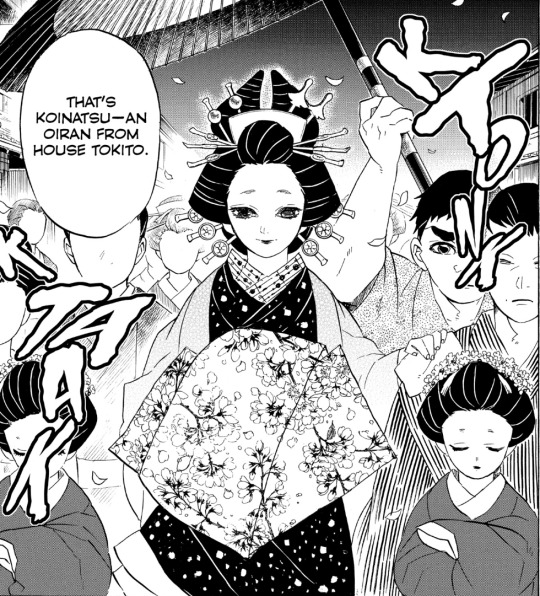
Linfamy. 2023 - Two Oh-So-Happy Destinies Forced Upon Daughters in Edo Japan. [Consulted on the 27th June 2023] Available on: <https://www.youtube.com/watch?v=Wcewuw0sMOo>;
LONGSTREET, Stephen. LONGSTREET, Ethel. MANSFIELD, Stephen. 2020 - Geishas and the Floating World: Inside Tokyo’s Yoshiwara Pleasure District. Clarendon: Tuttle Publishing. [Ebook];
STANLEY, Amy. 2012 - Selling Women: Prostitution, Markets, and the Household in Early Modern Japan. California: University of California Press. [Ebook];
#demon slayer#demon slayer from history to fantasy#demonsslayerfromhistorytofantasy#kimetsu no yaiba#demon slayer history#anime history#history#japanese history#research#history reseach#red light district#oiran#kamado tanjiro#zenitsu agatsuma#kny daki#kny gyutaro
46 notes
·
View notes
Text
Animanga History #1: Attack No. 1


It's no secret that volleyball is a popular sport in animanga- just look at the incredible success of Haikyu!! : Decisive Battle at the Garbage Dump, the fifth largest opening weekend for a JP movie ever. But where did the obsession start?
In 1968, with a shoujo manga by the name of Attack No. 1
(though Haikyuu!! might have found more inspiration in its rival The V Sign!). A series spurred on by a women's factory team taking the competitive (and subsequently Olympic) volleyball world by storm, the two events represent a huge change in tidings for anime and manga, though specifically in this case in relation to shoujo. So, come take a look at the incredibly interesting and surprisingly impressive history that Chikako Urano's second ever serialized work has left behind.
#shoujo#shojo#shoujo anime#shojo anime#shoujo manga#shojo manga#shoujosei#shojosei#haikyuu#haikyū!!#haikyuu anime#haikyuu movie#manga history#anime history
8 notes
·
View notes
Text
x
#anime#anime history#my neighbor totoro#grave of the fireflies#studio ghibli#barbenheimer#my tiktoks
26 notes
·
View notes
Text
So one of the coolest bits of animanga ephemera that I own is probably these two volumes of the Epic Comics printing of AKIRA.
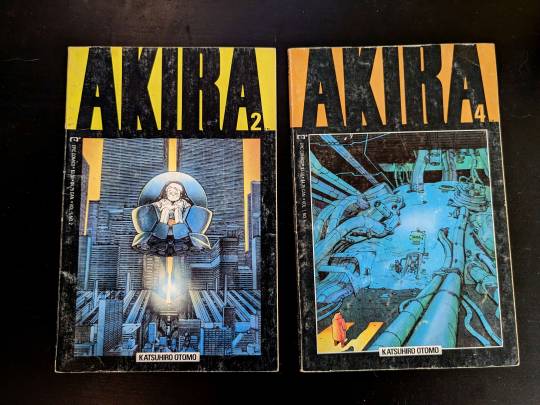
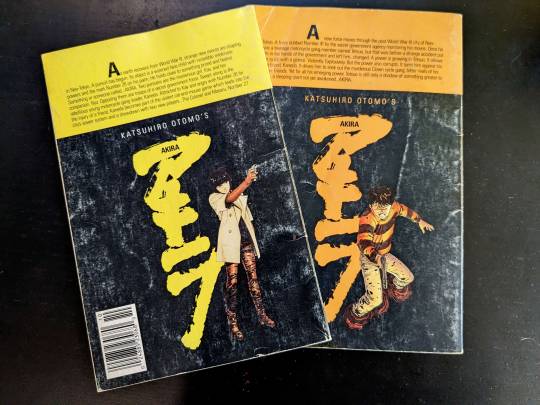
In 1988, American comics publishers were starting to take notice of the growing popularity of Japanese animation, and Marvel wanted a slice of the pie. A few years earlier, they had made the Epic Comics imprint to run more adult stories free of Comics Code censorship, including both standalone titles and non-canonical spinoffs of their more popular characters. The fledgling imprint seemed like the perfect place for a slice of that cool, weird Japanamation pie. They set their sights on Katsuhiro Otomo's AKIRA, which had done well in Japan and was set to get film adaptation that year. The editor of Epic at the time felt that the disaffected youth, psychic powers, and post-apocalyptic sci-fi setting would be familiar enough touch points to make the series resonate with American readers.
However, Epic didn't think that American comics readers would be as drawn to something that read "backwards" and was black and white. So, they did what would become the standard for many years- they flipped the pages to read left-to-right. They then enlisted colorist Steve Oliff to create a full-color version of AKIRA. While it's easy to jump to thinking of this as a butchering of the original work, Otomo was actually fully on board, as he wanted his work to reach as many people as possible. Otomo collaborated with Oliff directly at first, flying out to meet with him and share some of his personal desires for the coloring. He had some initial color guides, stills from the as-of-yet unreleased movie, and a deep passion and desire for his work to do well in the west. For the first five or six issues, Oliff sent all of his colorings off to Otomo for approval, but after that, Otomo was pleased enough that he gave Oliff free reign to go with his instincts for the rest of the comic's run. The colored version was even re-licensed, flipped back to the Japanese order, and released in Japan! I've never seen any copies of that, but I bet it's cool as hell!

I got these as a Christmas present sometime in the mid '00s from my Aunt Ing and Uncle David, who knew I liked anime and manga, but knew absolutely nothing about the stuff. They picked them up at a garage sale in DC for pocket change, and gave them to me along with a second hand copy of the DEVILMAN live action movie from 2004. I clearly remember them saying something along the lines of "Here, I hope you like this! We know you like that manga stuff. Hopefully 'Akira' isn't Japanese for like hardcore donkey porn or something, hahaha!" ...As if you couldn't flip the book open and see what was in it for yourself, Uncle David?
(Also worth noting that I had already seen the Akira movie at this point, so it's not like I didn't know what I was getting into!)
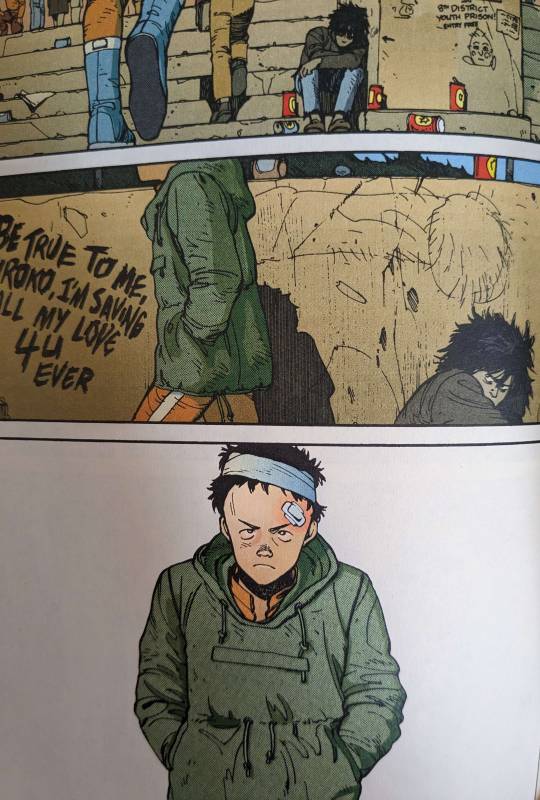
The manga (and the not-long-after release of the anime) made AKIRA a hit in the states. The Epic Comics run split the series into 38 issues that ran from 1988 to 1994. However, the legacy of Epic's colored run has an influence outside of just helping to introduce this iconic series to American readers.
It was also one of the first digitally colored comics.
Oliff and his company, Olyopitcs, were pioneers in using digital coloring methods. While he made initial color guides on paper versions of the pages using traditional methods like pantone films and paint, the finalized versions were all colored digitally, allowing for a wide, rich range of colors. This style of coloring incentivized Marvel to print it on slightly higher quality paper, and the series' success made Marvel more interested in looking to computers as a way to enhance their art and workflow. Perhaps he overstates it a bit, but Oliff credits his Eisner award-winning run as the colorist for AKIRA as the turning point for digital art's acceptance in comics.
It's unlikely that the colored version of AKIRA will ever be re-released, as the rights that Marvel held have LONG since traded hands, first to Dark Horse and then back to Kodansha. Copies of the colored version of AKIRA are hard to come by and pricy now, ranging from $10-100 for a single issue on eBay depending on condition and what particular issue it is (climactic issues are obviously more expensive than more laid back ones). It's not completely out of the question that it'll see the light of day again, however; Oliff still has all the digital files of the colored version of AKIRA, and he has expressed that he would be more than happy to have them reprinted if Kodansha wished to.
If not, though, I still have my two issues, and a very cool piece of anime localization history.
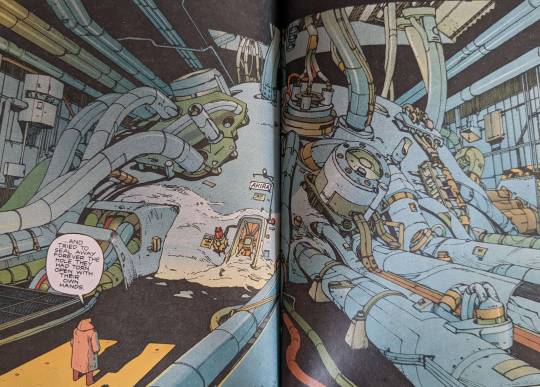
Historical info for this post was fact checked/sourced from this Japan Times article from their 30th anniversary retrospective and this 2016 ANN interview with Oliff. Feel free to check them out if you want to know more!
#long post#Akira#akira (1988)#katsuhiro otomo#fandom#anime history#fandom history#localization#localization history#comics history#doetalks#anime#manga
46 notes
·
View notes
Text

64 notes
·
View notes
Photo



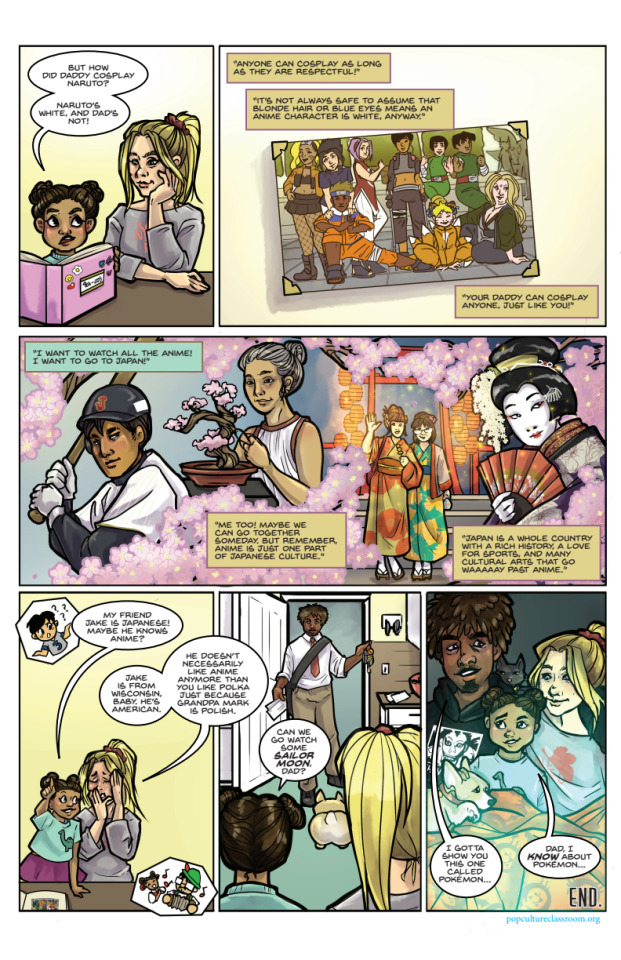
Pop Culture Classroom creates monthly short comics based around history, and for issue 75 they let me go crazy do the writing and art for the history of Anime in America.
Have fun finding all the anime easter eggs! Can you find my own ~ ˗ˏˋ ★ ˎˊ˗ cameo ˗ˏˋ ★ ˎˊ˗ ~? Can you find how many CLAMP ONES I SNUCK IN BWA HAHA?!
You can download the comics (as well as other issues and nerdy educational tools) at Pop Culture Classroom for FREE! It includes my script, sketches, historical notes, sources, and teaching guide! (Also check out other issues I’ve worked on like Denver Pride’s History, Meredith Ellis and The Origin of the US Flag)
#comic#anime#anime history#pop culture classroom#terra necessary#atomic pixies#nostalgia#weeb#otaku#otaku life#sailor moon#dragon ball z#fandom#anime convention#clamp
22 notes
·
View notes
Link
Some sad news to share - Kevin Lillard, prolific cosplay photographer and anime journalist, has passed away. From 1999 to 2009, Kevin ran the “A Fan’s View” website, in which he personally traveled to every anime con he could in North America & chronicled them by taking hundreds of cosplay photos to post online. This was a huge deal, considering this was the era before most people could afford their own digital cameras, and before people had phones with cameras in them. Some fans only have photos of their old cosplays in thanks to Kevin taking a picture of them at a con.
“A Fan’s View” was also famous for his “Person of the Week” columns, which not only highlighted important industry talents, but also convention personalities and passionate fans that were known throughout the community for their hard work and the love they had for anime & manga that fueled it.
Kevin was also a consistent writer for staples of the time, like Animerica, Super Manga Blast, Manga Max, and Newtype USA magazines, often using photos he took for convention coverage.
Kevin made a real difference in the anime community, and his warmth & passion will be sincerely missed.
50 notes
·
View notes
Text
Dr. Slump (Arcadia 2001, Bandai, 1983)
You can play it in your browser here, or download it along with the fan-translated 1999 PS1 game and required emulators here (where more info about playing the Arcadia game can also be found).
In-browser controls, 5 to select mode, 1 to start, arrows to move, numpad 2 plus arrow to N'cha.
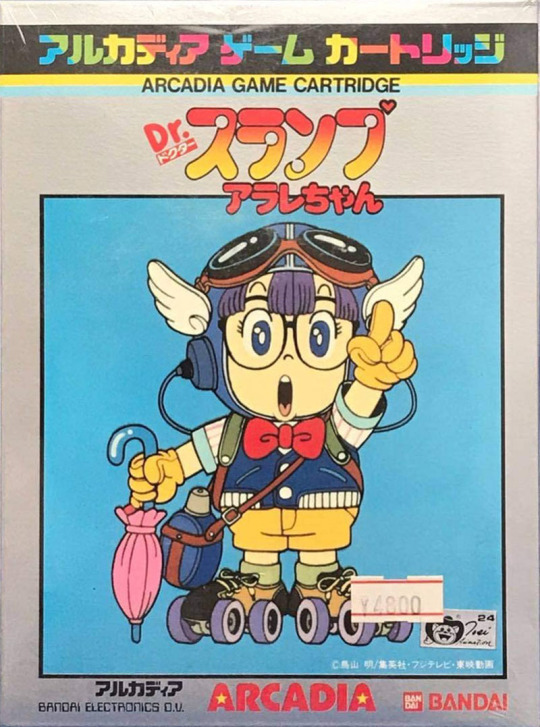


#internet archive#in-browser#game#games#video game#video games#videogame#videogames#obscure games#licensed games#anime#anime history#dr slump#dr. slump#arale#akira toriyama#toriyama#rip toriyama#retro games#retro gaming#retro graphics#1983#1980s#80s
16 notes
·
View notes
Text
even for a disney movie tangled takes a pretty random but enjoyable departure from the original fairytale and i do think that's because another prince character just wasn't cutting it and they decided to incorporate the gentleman thief storytelling tradition instead. the art design and miyazaki loving team behind it pretty overtly tells me the idea for that change came from the castle of cagliostro and a deep appreciation for it.
and me? personally? I WOULD rank cagliostro one of the most sincerely moving and aesthetically enchanting but also actiony fun movies about a princess ever animated and somehow it's not trying too hard to be ironic or hip or something. I feel like it's an obvious choice for study when trying to make a tricky script adaptation work when it is calling for the upbeat fight sequences and genre aware clever subversions but still needing to sincerely remain a pretty princess story in a magical land that does actually celebrate the spirit of fairytales and trying not to skimp too hard on any aspect
the original script for the rapunzel adaptation before lasseter took it over btw was a sort of fish out of water body swap modern day disney princess parody situation banking off the success of shrek. that was imo directly reworked as Enchanted. and much better utilized that way too
tbh in seeking a good solution to the new but not too new direction for disney, post-potf critical acclaim for returning to roots of sincerity but pre-frozen box office sensation, still seeking that dreamworks and pixar level of market domination. there was a very happy tonal medium to be found in cagliostro and it's success does suggest what something like that could do in a market looking for more modern, self aware and action packed takes on princess movies. a market that was already responding well to the dubs of other miyazaki directed movies disney was distributing.
castle of cagliostro does deconstruct fairytale stories and notions and princess movies, but does so much more lovingingly earnestly and whimsically, with a lot of affection for the source material compared to the cynicism of shrek. which as heart felt and genius as it is , wasn't something the disney company could pull off and maintain their brand.
there is nothing but sympathy for the kind of idyllic childhood notions of heroes and fairytale castles present in older disney movies, because clarisse herself holds onto those notions to help her maintain hope when escaping her situation. lupin plays into it too with some irony but not in a way that mocks her, just lightly mocks himself. it's a movie about how the real world can be really hard and at times you WILL face things that are insurmountable alone because that's normal and part of being a real person with normal limits. and asking for help from kind people isn't a weakness but part of life, a beautiful part of life even.
i've actually never seen a damsel in distress storyline portrayed as so human and understandable and not shameful. nor as a mark of being incapable but a role we all play at some point. it directly signals those who are most capable at the time to heed those around you. for what the hell else are all those skills and power youve got good for in the first place. DO be aware of those who are currently drowning in a situation no one should be expected to magically just surmount or suffer on their own and DO take action. it's your job
i love the castle of cagliostro down to my very core because I think it manages to express innocence wonderment as a strength of the soul even when juxtaposed against the complexities and realities of the often harsh present day adult world. and does so even more gently and optimistically than other similar hits like shrek and princess bride. in that sense it's too perfect for any modern disney filmmaker to NOT find inspiration in. anyone would be happy to look to it as one of the examples of how to make a fairytale adventure feel updated, cool and self aware but still maintain its palpable respect for those who love innocence and wonder.
#lol funny horse post becomes 7 paragraph essay sorry#castle of cagliostro#lupin iii#miyazaki#animation history#disney history#anime history#the castle of cagliostro#tangled#disney analysis
38 notes
·
View notes
Note
something it occurred to me to wonder recently and thought if anyone would know, it would be you ;p
when Eva began back in 1995, how much was it anticipated? both narrowly in otaku circles, and more widely among 'people who watch TV in Japan'? as far as i understand the history, Gainax was pretty niche back then and mostly known for dating sim games, but the visual style of Eva is so immediately striking...
like, I know nobody quite realised just how huge it would become, but was there some sort of excitement for a new robot anime from the people who made Wings of Honneamise, Gunbuster and Nadia? or was it a complete surprise?
Hm, good question! I am not super confident in my answer, so my bet is "highly anticipated but not crazily so". Gainax was known but niche, having 'Otaku' success with as you mention Wings and Gunbuster...until Nadia: Secret of Blue Water came out in 1990. This would not have put Gainax per se on the map, as Toho and Group Tac were branded as the primary producers, Gainax as secondary, but it definitely put Hideaki Anno on the map as director. The show was wildly successful, aired in prime-time slots - which, fun fact, meant that its first season airing was interrupted due to breaking news about the onset of the First Gulf War - and Nadia herself became Best Girl in most of the Newtype/Animage style polls of the time until being dethroned by Sailor Mercury in 1992. Nadia was definitely still 'an anime', and it was a kids show in too many ways to be a real breakout. But it was the top of anime of its time, no debate.
Its success is what gave Anno the ability to finance Evangelion, and it meant he was also able to pull a lot of 'big talent' for branding purposes - which ofc was intentional, Anno is no fool. Hiring Usagi from Sailor Moon's voice actress Kotono Mitsuishi to be Misato for example, when Sailor Moon was the #1 anime of 1994, is certainly because of her talent but also because of her buzz, and he has a bunch of hires along those lines to make Eva the "oh man the best of the best are all here" kind of show.
(Again fun fact time - you prob know this one - he also tried to bring Kunihiko Ikuhara, Sailor Moon director, onto the animation staff, and as part of his tactics to woo him named Rei Ayanami after Sailor Mars, Ikuhara's favourite SM character that he famously cosplayed. Ikuhara was alas too busy with wrapping up his time on Sailor Moon and forming Be-papas to make Utena to spare the time)
All this meant that by the time Evangelion was getting ready for its Fall 1995 debut, the cover of the April 1995 issue of Newtype looked like this:

And hey, if you want some evidence of the buildup discussed, the first page of the cover feature starts off in 1990, with a discussion of the impact of Nadia:

Even here, once it transitions to discussing Evangelion, Anno is promising "something anime fans have never seen before". It was a common refrain in all the marketing material throughout 1995, that this show was going to be special. The manga adaption actually began print in February of 1995, as a hype builder. The Evangelion team was putting it all on the line.
Also I love that early concept art - the more gundam-esque pilot suits over the plugsuits would have absolutely been my jam, alas.
(This marketing material is more evidence against the mythical "mid-production pivot" theory that fans in the past surmised about Eva's intended story, but a topic for another time)
Still, this is just marketing - who wouldn't say your show will Change Everything, that is your job as a business! For all the inner-otaku hype and rep, Evangelion was definitely targeted at those otaku, and it wasn't marketed to an all-ages demo with wider appeal like Sailor Moon. Anno even remarks in the interview above it would be more of a 'cult hit' compared to Nadia. It had a Wednesday airing slot (at 18:30, not actually super late - another myth, it just had late night re-runs after its evening air slot), not a great time and definitely not a Saturday evening slot like Sailor Moon.
It was a show that instead grew over its airing and broke out of its slot and genre - its finale got audience ratings almost twice that of its premiere (though these numbers are hard to aggregate over different stations). Its about midway through its run that you start getting those "phenomenon of Evangelion" style articles, and when the ending hits the culture critics start jumping in as well and it becomes a true cultural event, and discussion of the show in mainstream magazines starts happening. That wasn't happening in 1995.
I wish I could say it all culminates with End of Evangelion being released and being the #1 film of the year and all that - but while it did well it got its clock absolutely cleaned by Princess Mononoke, which came out the same week. An honourable defeat at least!
Hopefully this is a good answer! Definitely more to be said on the topic, man this would be a great deep dive project...
#evangelion#anime history#also you had a great reply to my miyazaki walk cycle post and i never got to reply I am sorry -_-
45 notes
·
View notes
Text
The Red Oni & The Blue Oni
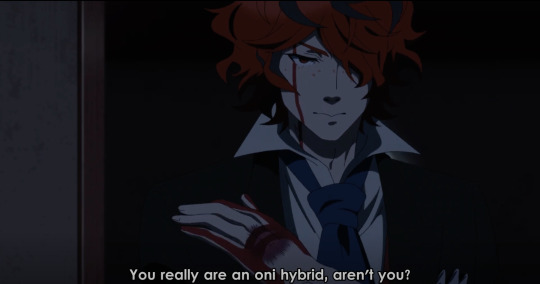
The moment I saw the confrontation of Jack and Tsugaru I realised that they were a pretty obvious omen to the Red Oni and Blue Oni. What is this Red Oni and Blue Oni? Well, a little classic story in the Japanese imagination.

Hamada Hirosuke wrote “Naita Akaoni - The Red Oni who Cried" that is a story that talks about a Red Oni that wanted to be friends with the humans, and so, his Oni friend, the Blue Oni, attacks the humans so that the Red Oni could be seen saving them. "Hamada's Oni are righteous and pure-hearted: the red Oni is friendly and prepares tea and home-made cakes for the humans, while his counterpart, the Blue Oni, espouses qualities of self-sacrifice by putting the needs of others ahead of his own. The blue Oni is considerate enough to leave the are so as to prevent his friend's cover from being blown. Such conduct among human was increasing rarity at the time the story was written." (Reider, 2003) This story ended up starting a trope trend, as we can call it, the Japanese media where we see two individuals either enemies or allies that represent the two sides of the spectrum of the personalities. And when we start to take notice of this, we are going to notice it everywhere.
“This trope is about two individuals (or occasionally, factions or civilizations) that are significantly linked together somehow (such as through a rivalry, friendship, being siblings, co-workers, competitors, etc.) that have differing personalities and, with it, often different approaches to the world in general, especially whatever they might be competing in/for/over��� (TVtropes) The Red Oni normally does have a more extroverted personality, associated with passion, wildness and defiance, most of the times being the “idiot hero” that does not care about criticism about them. The Blue Oni on the other hand tends to be the introverted one, associated with serenity, control, and authority, mostly being respected in a way that can be confused with intimidate.
Now, have you realized something? Yes, in the case of two Onis the personalities are swapped. “While many expressions of this trope play it straight, it is also not uncommon for the Blue Oni and Red Oni to mix traits” (TVtropes) While Tsuguri, having the colour blue is the dumb one, Jack is the intimidating one. Also, we can see the contract in their fighting styles. “In a show where it's relevant, differences in fighting style may be something like Technician Versus Performer.” (TVtropes) (Which is extremely funny coming from the fact that Tsugaru is literally a performer)

It’s funny to think that the author decided to go with such a clear reference, and still make it so different. It also can make you think what Tsuguru does have store to surprise us even more. We need to continue watching the anime, or read the books to a better analyses of the characters, but at least we have a surface idea of their psych.
REIDER, Noriko T. 2003 - Transformation of the Oni: From the frightening and symbolical to the cute and sexy. Asian Folklore Studies, Volume 62, 133-157. Ohio: Miami University. <https://www.jstor.org/stable/1179083>;
TVTROPES. N.d – Red Oni, Blue Oni. Accessed August 28, 2023 <https://tvtropes.org/pmwiki/pmwiki.php/Main/RedOniBlueOni>
#undead girl murder farce#undead murder farce#japanese history#anime history#oni history#oni#tsugaru shinuchi#jack the ripper
23 notes
·
View notes